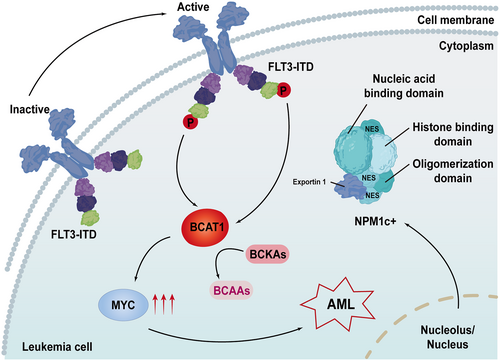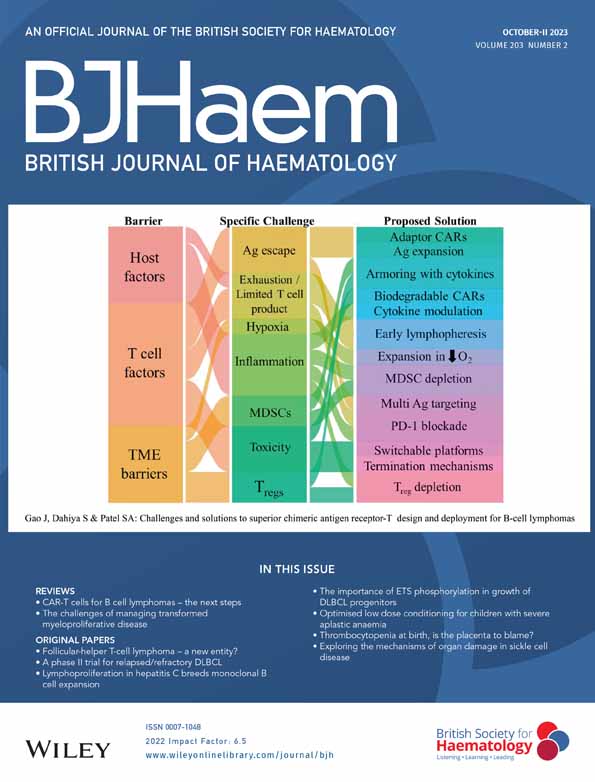Prognostic impact of FLT3-ITD mutation on NPM1+ acute myeloid leukaemia patients and related molecular mechanisms
Summary
The prognosis of acute myeloid leukaemia (AML) patients carrying NPM1 mutations is significantly worse when accompanied by FLT3-ITD mutations. However, accurate quantitative detection of FLT3-ITD mutations remains challenging. To identify a novel biomarker in NPM1+FLT3-ITD+ AML patients for more accurate stratification, we analysed the differential gene expression between the NPM1+FLT3-ITD+ and NPM1+FLT3-ITD− groups in five public AML datasets and identified a biomarker by taking the intersection of differentially expressed genes. We validated this biomarker in bone marrow samples from NPM1+ AML patients at the Peking University Institute of Haematology and analysed its prognostic significance. BCAT1 expression was higher in the NPM1+FLT3-ITD+ group than in the NPM1+FLT3-ITD− group in all seven cohorts. BCAT1 was able to predict the prognosis of NPM1+FLT3-ITD+ AML patients, and its predictive ability was superior to that of the FLT3-ITD allelic ratio (AR). FLT3-targeted inhibitor quizartinib reduced BCAT1 expression. BCAT1 knockdown using lentiviral vectors led to the downregulation of MYC expression. Thus, we identified BCAT1 as a novel biomarker for NPM1+FLT3-ITD+ AML patients. The FLT3-ITD/BCAT1/MYC signalling pathway may play a biological role in promoting the occurrence and development of AML in FLT3-ITD+ cell lines.
Graphical Abstract
Due to mutations in exon 12 of NPM1, the C-terminal nuclear localization signal (NoLs) is disrupted, leading to the formation of a novel nuclear export signal (NES). Exportin 1 interacts with NPM1c+ carrying NES and facilitates its transportation into the cytoplasm. The FLT3-ITD mutation leads to elevated expression of BCAT1, subsequently upregulating the expression of the MYC gene, thereby exerting biological functions that promote the occurrence and development of AML.
CONFLICT OF INTEREST STATEMENT
The authors declare that they have no known conflicting financial interests or personal relationships that could appear to have influenced the work presented in this paper.
Open Research
DATA AVAILABILITY STATEMENT
The datasets generated and/or analysed during the present study are available from the corresponding author upon reasonable request.





